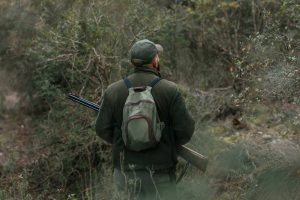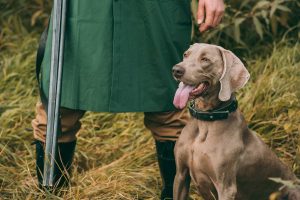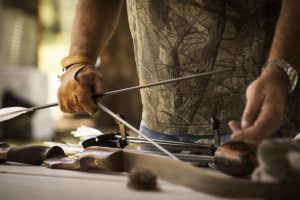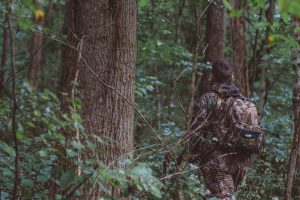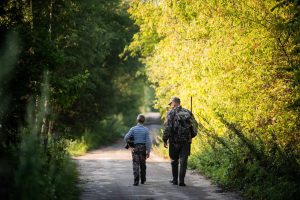Are you curious about the behavior and habits of wild animals? Do you want to learn how to track and locate them? If so, this article is for you. In it, we will discuss the various methods and techniques you can use to track and locate wild animals in their natural habitats. From identifying footprints and droppings to using specialized equipment and following trails, there are many ways to track and locate wild animals. Keep reading to learn more!
Types of Tracking
Tracking wild animals can be a difficult task, but there are a few methods that can help. The most common methods of tracking wild animals involve identifying and following footprints, droppings, and nests. Let’s take a closer look at how each of these methods can be used to track and locate wild animals.
Footprints/Tracks
Footprints are one of the most common ways to track wild animals. By looking for tracks and signs left behind, you can identify the type of animal, their size and even their direction of travel. Animal tracks can be found in mud, sand, snow and even on paved surfaces. When tracking footprints, look for patterns and inconsistencies in the tracks. For example, if you find a pattern of four toes, it could be a sign of a large cat like a mountain lion. Identifying the size, shape and pattern of the tracks can help you narrow down the type of animal you are tracking.
Common types of game tracks and their identifying features include:
- Deer: hoof prints with two lobes on each side
- Rabbit: small oval-shaped prints with four toes
- Fox: small triangular-shaped prints with four toes
- Coyote: large oval-shaped prints with five toes
- Bear: large round prints with five toes
- Elk: large hoof prints with two lobes on each side
Droppings
Droppings are another common way to track wild animals. Animal droppings can tell you a lot about the animal’s diet, size, and even their location. By carefully examining the droppings, you can identify the type of animal, the size of the animal, and the age of the droppings. Animal droppings can also provide clues about where the animal has been and where it might be heading. This can help you determine the best places to set traps or set up a camera for observation.
Common game droppings and their identifying features include:
- Deer: pellet-like droppings that are usually dark in color
- Rabbit: round droppings with a grassy texture
- Fox: small, black droppings with a strong smell
- Coyote: large, black droppings with a strong smell
- Bear: large, dark droppings that are soft and smelly
- Elk: large, round droppings that are dark in color
Locating Wild Animals
Once you have identified the type of animal you are tracking, it’s time to start locating them in their natural habitat. There are a few different methods you can use to locate wild animals, such as using specialized equipment, natural landmarks, and following trails. Let’s take a closer look at each of these methods.
Use of specialized equipment
Using specialized equipment can help you locate wild animals more quickly and accurately. The most common type of equipment used for tracking wild animals is a tracking collar. Tracking collars are equipped with GPS technology and can be used to track the location of an animal in real-time. This can be especially helpful if you are trying to locate a specific animal or if you need to know where an animal might be headed. In addition to tracking collars, there are also motion-activated cameras and listening devices that can be used to detect and monitor wildlife.
Motion activated cameras work by detecting when an animal moves within the camera’s field of view. When an animal is detected, the camera will take a photo or video of the animal and save it to a memory card. This can be helpful for game hunting, as it allows you to observe the behavior of the animal and plan accordingly. To use these cameras effectively, it is important to set them up in areas where the wildlife is likely to pass by. This could include near water sources, trails, or other natural landmarks. It is also important to set the cameras at the right height and angle to ensure that the animal is in the frame when the camera is triggered.
Using natural landmarks
Another way to locate wild animals is by using natural landmarks. Natural landmarks such as rivers, mountains, trees, and rocks can be used to identify the location of an animal. By looking for signs of animal activity such as droppings, tracks, or scat, you can determine which direction the animal is heading and where it might be headed next. Additionally, you can use the landmarks to get an idea of the terrain and environment in which the animal is living. This can help you identify potential hiding spots or potential sources of food for the animal.
Some examples of natural landmarks that can be used to locate wild animals include rivers, mountains, trees, rocks, caves, and open fields. You can look for signs of animal activity such as droppings, tracks, or scat to help identify the location of the animal.
Following trails
Finally, you can use trails to locate wild animals. Animal trails are paths that animals use to travel from one place to another. By following animal trails, you can gain insight into the animal’s behavior and habits. Try to use the trails to find potential hiding spots or sources of food. When tracking animal trails, it is important to look for signs such as footprints, droppings, or broken branches that can help you identify the type of animal and its direction of travel.
When tracking animal trails, some signs to look for include:
- Footprints: these can help identify the type of animal and its direction of travel
- Droppings: these can help identify the type of animal and its size
- Broken branches: these can indicate that an animal has passed through the area
- Scratches on trees or rocks: these can indicate the animal has marked its territory
- Urine: this can help identify the type of animal and its size
Advanced Tracking Techniques
Tracking wild animals can be a difficult task, but with the right techniques and tools, you can become an expert tracker. In this section, we will discuss some advanced tracking techniques that can help you locate wild animals more quickly and accurately. From identifying animal calls to tracking in the dark, there are a variety of methods you can use to track and locate wild animals. Keep reading to learn more!
Identifying animal calls
Identifying animal calls is one of the most effective ways to locate wild animals. By listening for and recognizing animal calls, you can determine the type and location of the animal. Calls can be used to attract the animal to a specific area. This can be particularly useful if you are trying to observe the behavior of an animal or if you are trying to set a trap. When identifying animal calls, it is important to pay attention to the pitch, frequency, and duration of the call. This can help you determine the type of animal and its location.
There are a variety of game calls available for purchase, such as deer, rabbit, fox, coyote, bear, and elk calls. These calls are designed to mimic the animal’s natural call and can be used to attract the animal to a specific area. Additionally, there are also electronic game calls available that can be used to simulate a variety of animal calls.
Tracking in the dark
Tracking wild animals in the dark can be a challenge, but there are a few methods that can help. The most common method is to use a flashlight or other light source to scan the area for signs of animal activity. You can also use night vision goggles to help you see better in the dark. Specialized equipment such as motion-activated cameras or listening devices are great ways to help you detect and monitor wildlife activity.
Some tips for tracking animals in the dark include:
- Use a flashlight or other light source to scan the area for signs of animal activity.
- Use night vision goggles to help you see better in the dark.
- Be aware of your surroundings and move slowly and silently.
- Use specialized equipment such as motion-activated cameras or listening devices to help you detect and monitor wildlife activity.
- Set up traps or bait to attract animals.
Setting traps
Setting traps is another way to locate wild animals. Traps can be used to catch animals or to simply attract them to a specific area. When setting traps, it is important to use the right type of bait or lure to attract the animal. It is important to check the traps regularly to ensure that you are catching the right type of animal. Remember to check local laws and regulations before setting traps.
Become a Better Hunter by Tracking
Tracking and locating wild animals can be a challenging but rewarding task. By using the methods and techniques discussed in this article, you can become an expert tracker. From identifying footprints and droppings to using specialized equipment and following trails, there are many ways to track and locate wild animals. Additionally, advanced tracking techniques such as identifying animal calls and tracking in the dark can help you locate wild animals more quickly and accurately. By tracking and locating wild animals, you can gain insight into their behavior and habits, and you can also help conserve their natural habitats.
More Hunting Posts
Tylor Bennett
An editor at Outdoors ReportTylor Bennett is a senior editor for the blogzine and also reports on breaking news based in London. He has written about government, criminal justice, and the role of money in politics since 2015.
0 comments
Leave a reply
Your email address will not be published. Required fields are marked *A Beginner’s Guide to Backpacking





